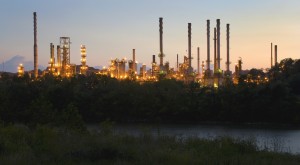Several exploration and production executives were recently asked what the price of crude would need to be to continue developing US oil and gas reserves, which would ultimately affect downstream refinery profitability. In responses to the press query, Jim Volker, CEO of Whiting Petroleum, said that his company would increase production around $70 per barrel (/bbl). “At $70/bbl, it will continue to grow,” noted Scott Sheffeld, CEO of Pioneer Natural Resources, and “$70/bbl for U.S. oil turns it on for us,” noted Harold Hamm, CEO of Continental Resources.
Well here we are, going into the fourth quarter of 2015 (4Q2015) and WTI is at about $44/bbl, significantly benefiting downstream margins, while decimating upstream business. There seem to be projections that prices will decline even further, while a few experts project that prices will increase again in 2016, but by how much is hard to estimate. Nonetheless, refiners are happy with these low priced feedstocks to meet relatively high demand for refined products, including fuels and petrochemicals. Some speculation that this high demand will stagnate beginning in 2017 may be why some mega-refinery projects have been postponed or altogether cancelled (at least in North America) in favor of modest investments targeted at monetizing and adjusting process assets to deal with the peculiarities of the cheap U.S. crudes currently on the market. For example, multi-billion dollar investments in conversion units (e.g., cokers, cat crackers, etc) needed for upgrading heavy Canadian crudes don’t perform as expected with LTO naphthas and light ends below 350°F.
In other instances, supplying recently upgraded FCC units with enough vacuum gas oil (VGO) is a challenge for some Midwest and Gulf Coast refiners, which is why atmospheric tower bottoms (ATBs) from new condensate splitters may generate additional value for midstream processors like Continental Resources, connecting the condensate splitter to the refinery by way of a well- integrated midstream-to-refinery interface, where condensate splitter ATBs can be transported by pipeline for processing in a refinery FCCU.
In spite of challenges with domestic US LTOs and light ends, refiners can find ways of retaining the currently high utilization rates by substituting imported crudes with domestic feedstocks, up to a certain point. For example, a case study recently developed by Charles Kemp at Baker O’Brien focused on a 100,000 bpd refinery of imported medium-to-heavy crude oil, where constraints were encountered when substituting imported crude with LTOs. Due to the proportion of naphtha and lighter material in LTOs, crude throughput and feedstock available for downstream conversion units declines at LTO/heavy blend ratios above 40%. Kemp noted that unit turndown constraints become a factor when downstream feedstock (VGO and heavier) falls to less than 70% of downstream capacity, suggesting 65% maximum LTO in the blend. Again, the opportunity exists for partially filling conversion units with ATBs available from new condensate splitters. Considering the unique interface between the North American midstream infrastructure and the refiner, close cooperation could extend the current high margins run well beyond 2017.








Leave a Reply
You must be logged in to post a comment.